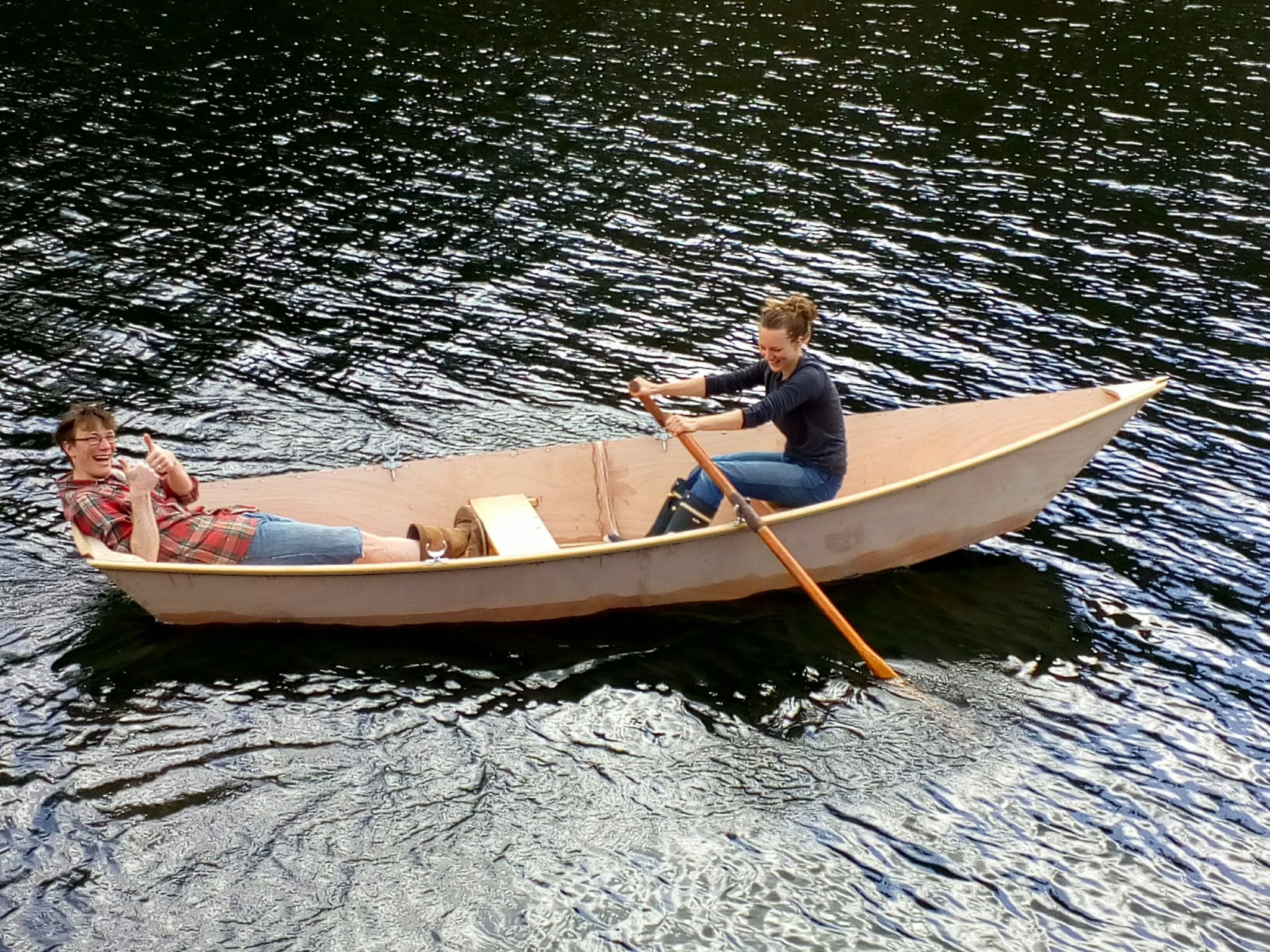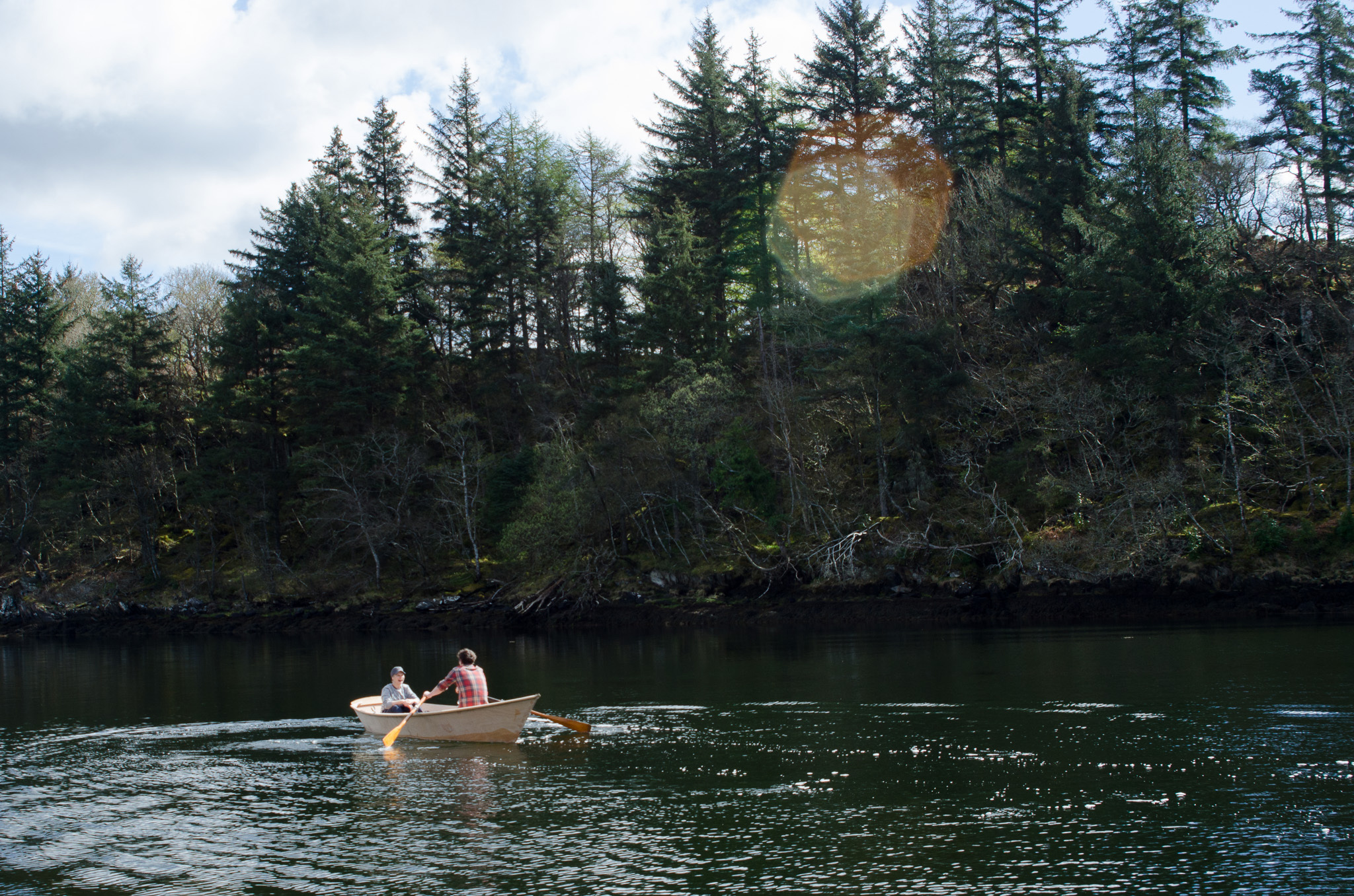Boatbuilding with Archipelago Folkschool
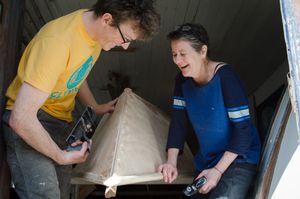
We built a wooden boat in five days with Arcipelago Folkschool
- Year 2018
- Collaborators Archipelago Folkschool
Last week I was out on the Taynish Peninsual on the west coast of Scotland with boatbuilder Ben Wilde, and artists Ruth Little and Claire Cunningham. We had five days to build a wooden boat.
Ben is currently setting up a new community project, the Archipelago Folk School and he’d brought us all together for a week of discussing what the Folk School could become. To do that, we decided to prototype a future workshop to be run by the Folk School – a very speedy boatbuilding course.
A short film that I made of the process. Read on for the story.
A Boatbuilding Story
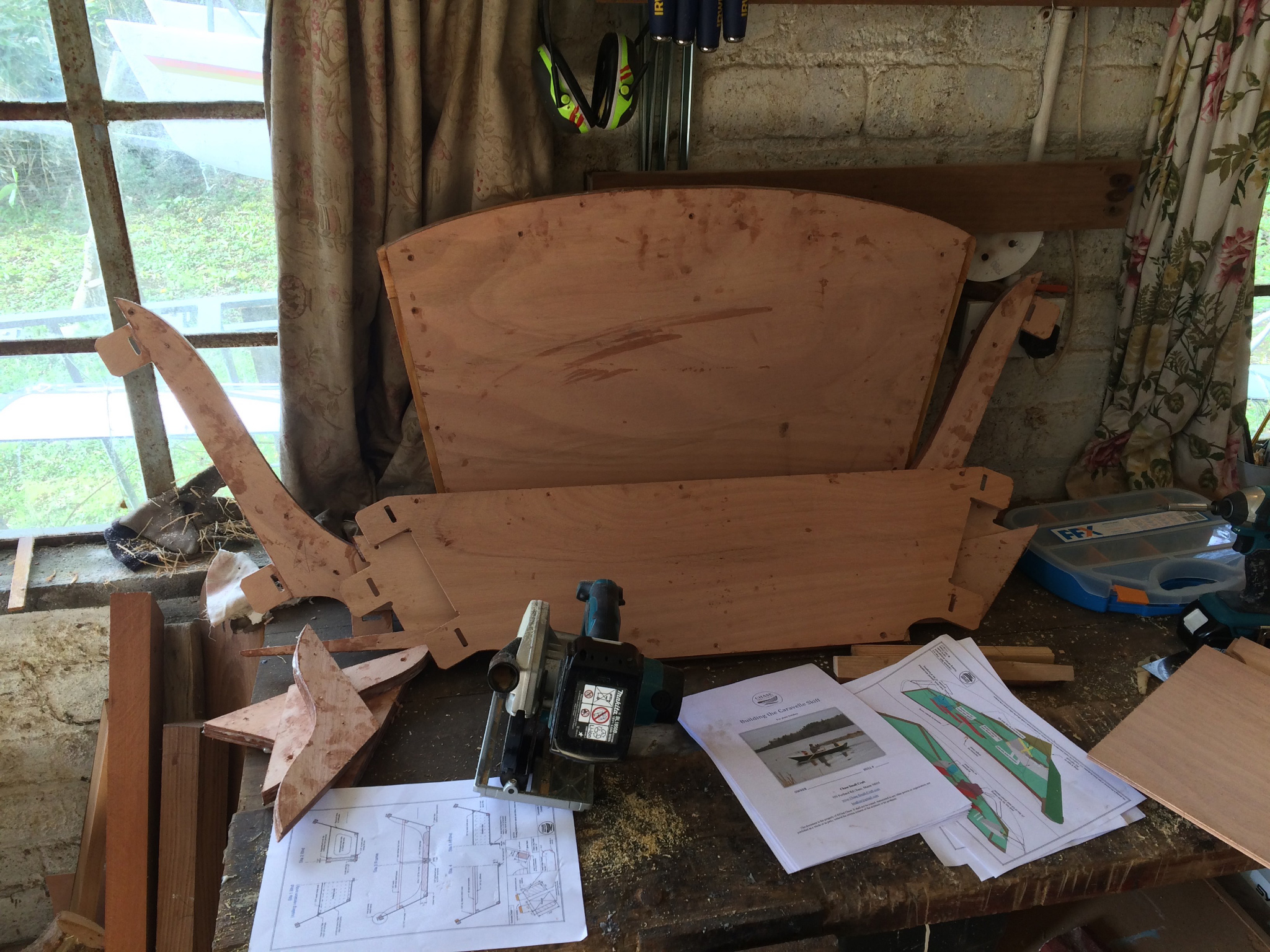
The boat was designed by Clint Chase as a rowing boat kit that could be built quickly but then amended for purposes such as sailing. We began with a pile of CNC cut shapes in plywood… There was a long way to go!
Excluding Ben, we were a very inexperienced team (I’d done only a few months of woodworking, Ruth and Claire were complete beginners). We had a lot to learn but despite this the boat began to take form very quickly!
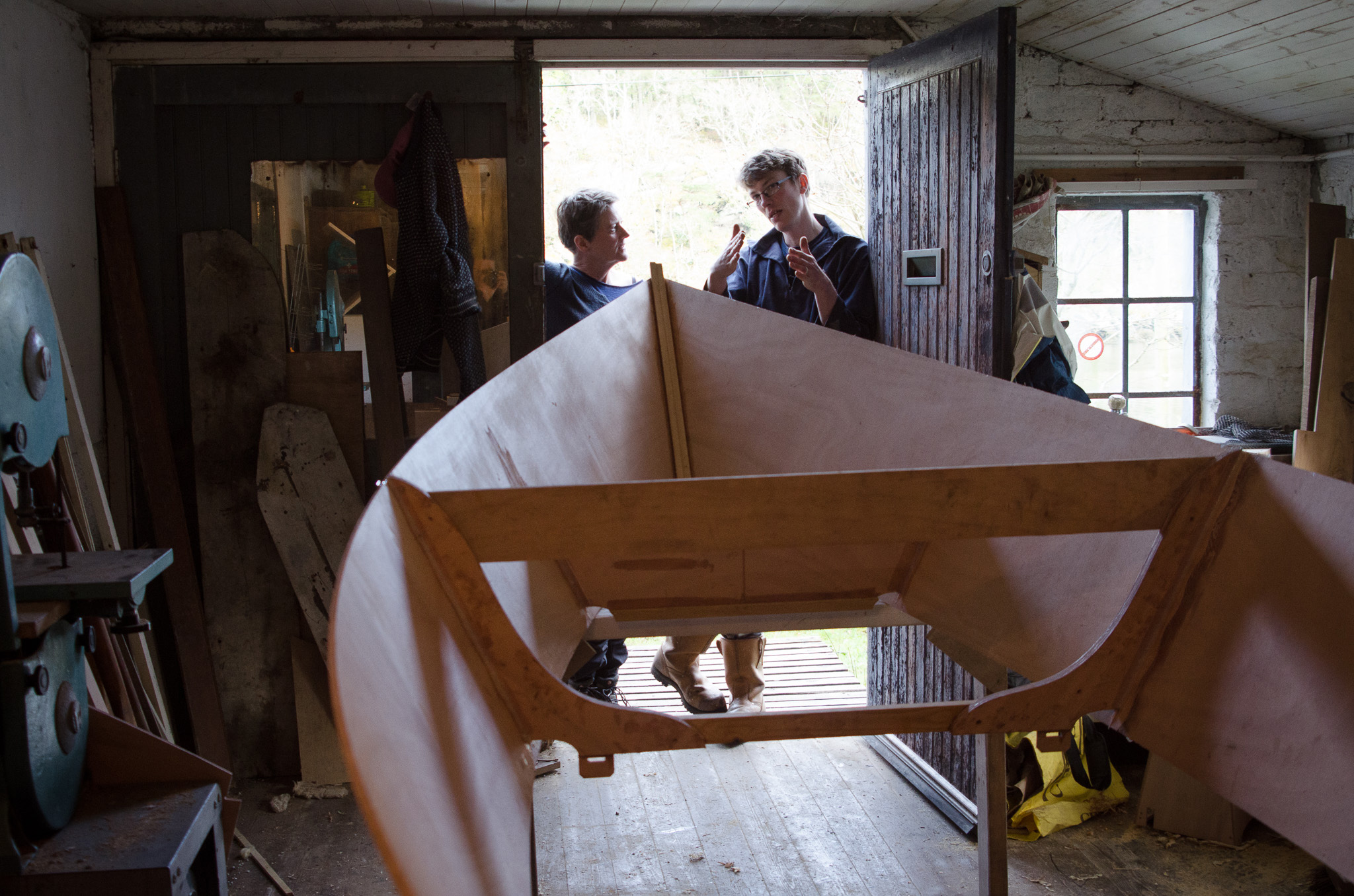
Ben constantly had us eying along the hull to check whether the form was “fair” or not, was it an even and pleasing curve? I struggled to get my head around the term at first but towards the end of the week we’d begun to use it to describe the intangible aims of the project as well as the hull of our boat.
By Wednesday it was nearly time to fit on the bottom, but first of all we had to fit and shape our “chine logs” that would hold the bottom in place and strengthen the boat hull. Below, I’m cutting one at a “compound bevel”: the exact angle for the piece of wood to tuck in to the sloping stern of the boat. Below you can see the chine logs attached in place with clamps on one side and screws on the other, waiting for the glue to dry. Note the beautiful loch just outside the workshop door, Ben insists that boats are built with their bows pointing out the workshop.
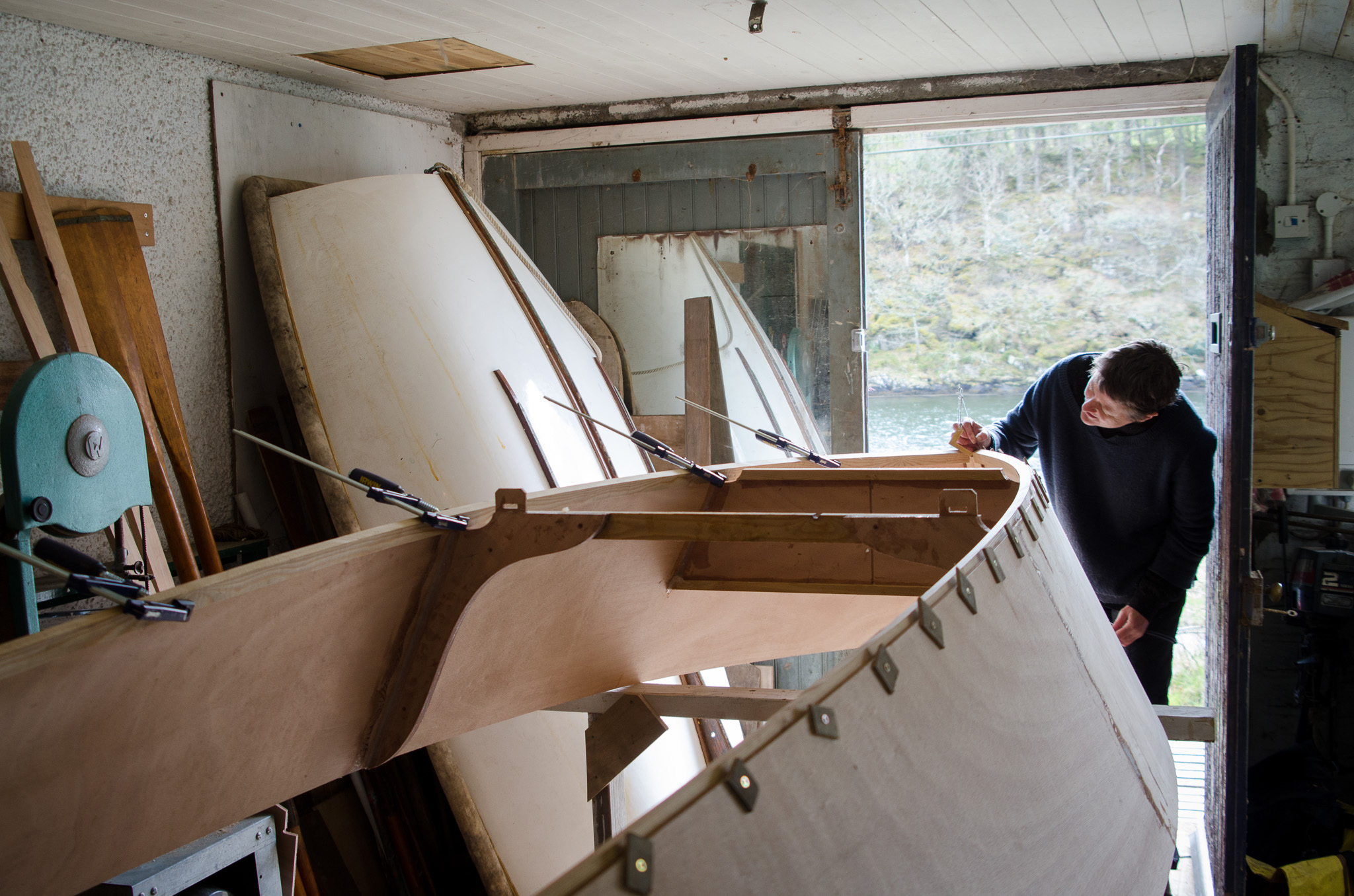
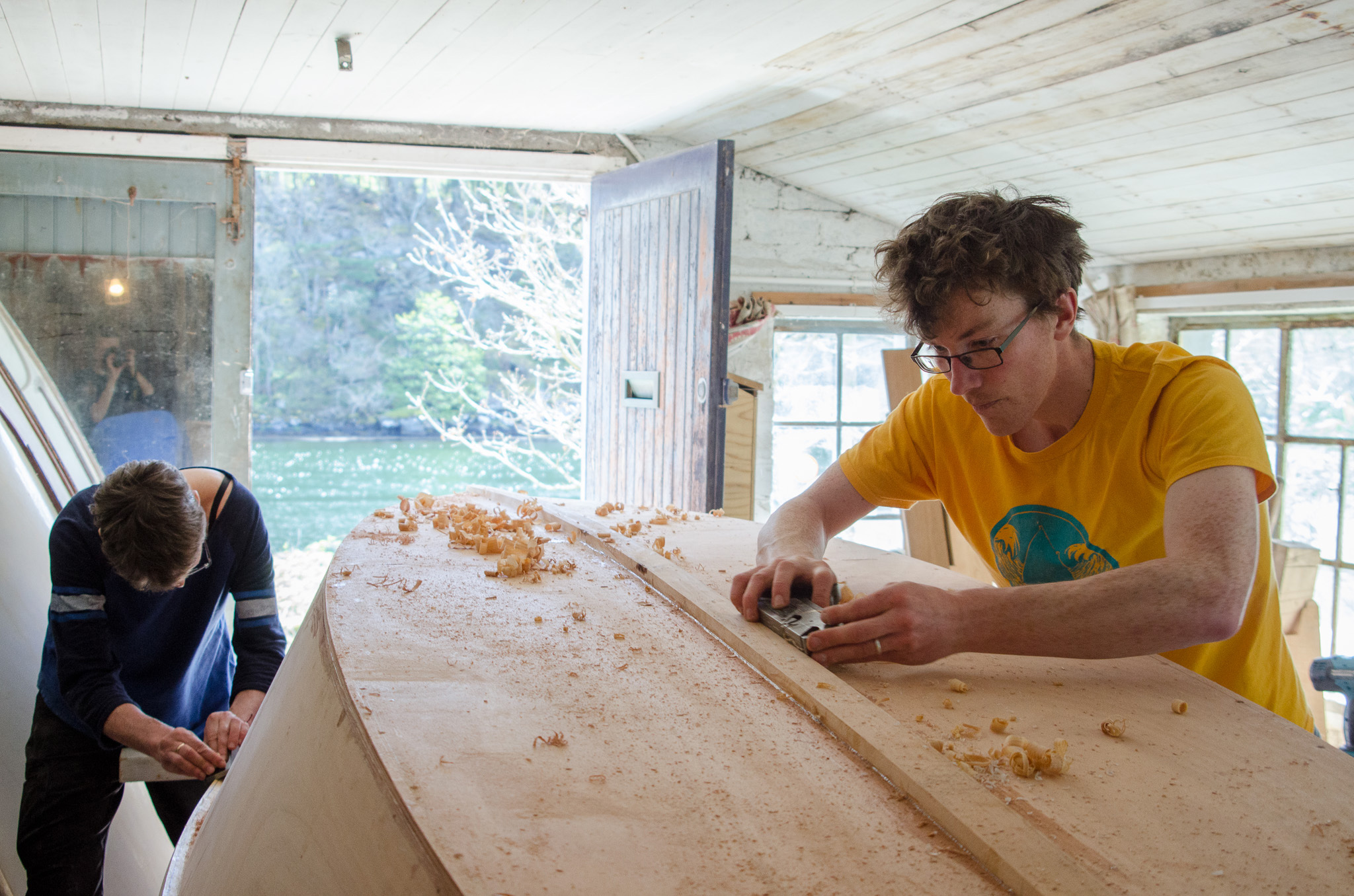
Shaping our chine logs to sit completely flat on the bottom of the boat was our first real taste of the hand craft involved in boat building. You can never be told how to use a plane, you must learn it through constantly adjusting your angle, hold, pressure, posture… based on the results you’re seeing in the material you’re working on. A real “full body experience” as Ruth described it. By the end of a few hours planing she had decided she was going to respecialise as a “professional planer” she enjoyed it so much.
The boat has a very similar design to the Stromness “Flattie”, the native design used and still built in my hometown in Orkney. Despite this, flat bottomed boats were not the vernacular in Scotland because we simply didn’t have enough large pieces of wood. Scots instead built “clinker” boats from many thin planks, overlapping them to create a better seal against leaks. Flat bottomed boats were designed as part of the whaling and fishing industry in Canada. Incidentally, this industry was populated by many Scots and Orcadians who’d travelled there to work and these Scots then brought the design back to Scotland to co-incide with the invention of the sawmill. There was a beautiful circularity in the history of the design of our boat.
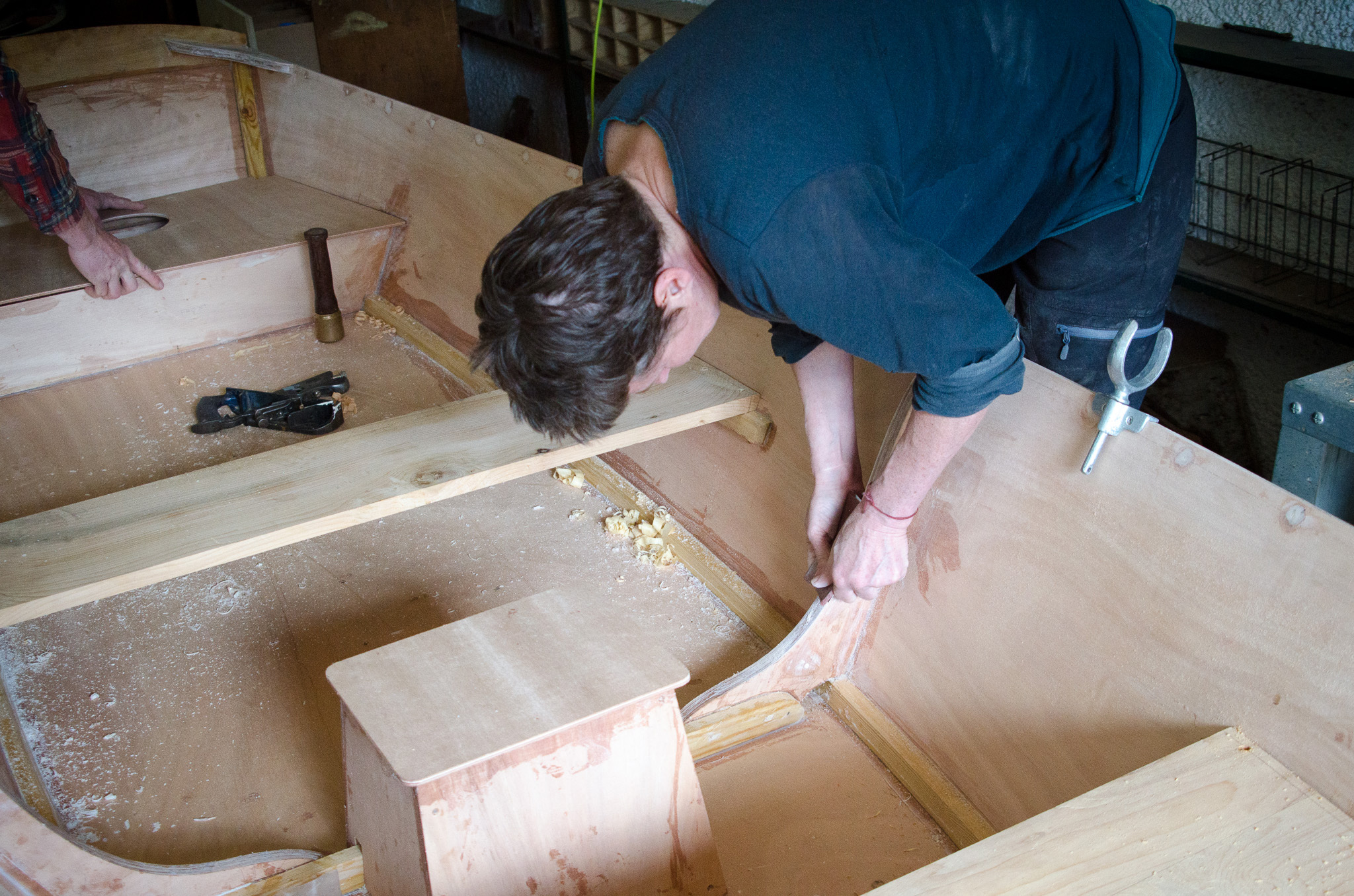

After fitting (and then adjusting) a slightly squint keel, installing thwarts (seats) and shaping some beautiful rub rails along tie sides of the boat (more planing!) our boat was ready to be launched late on Saturday morning! We christened her “Swona” with a dram before carrying her down to the loch.

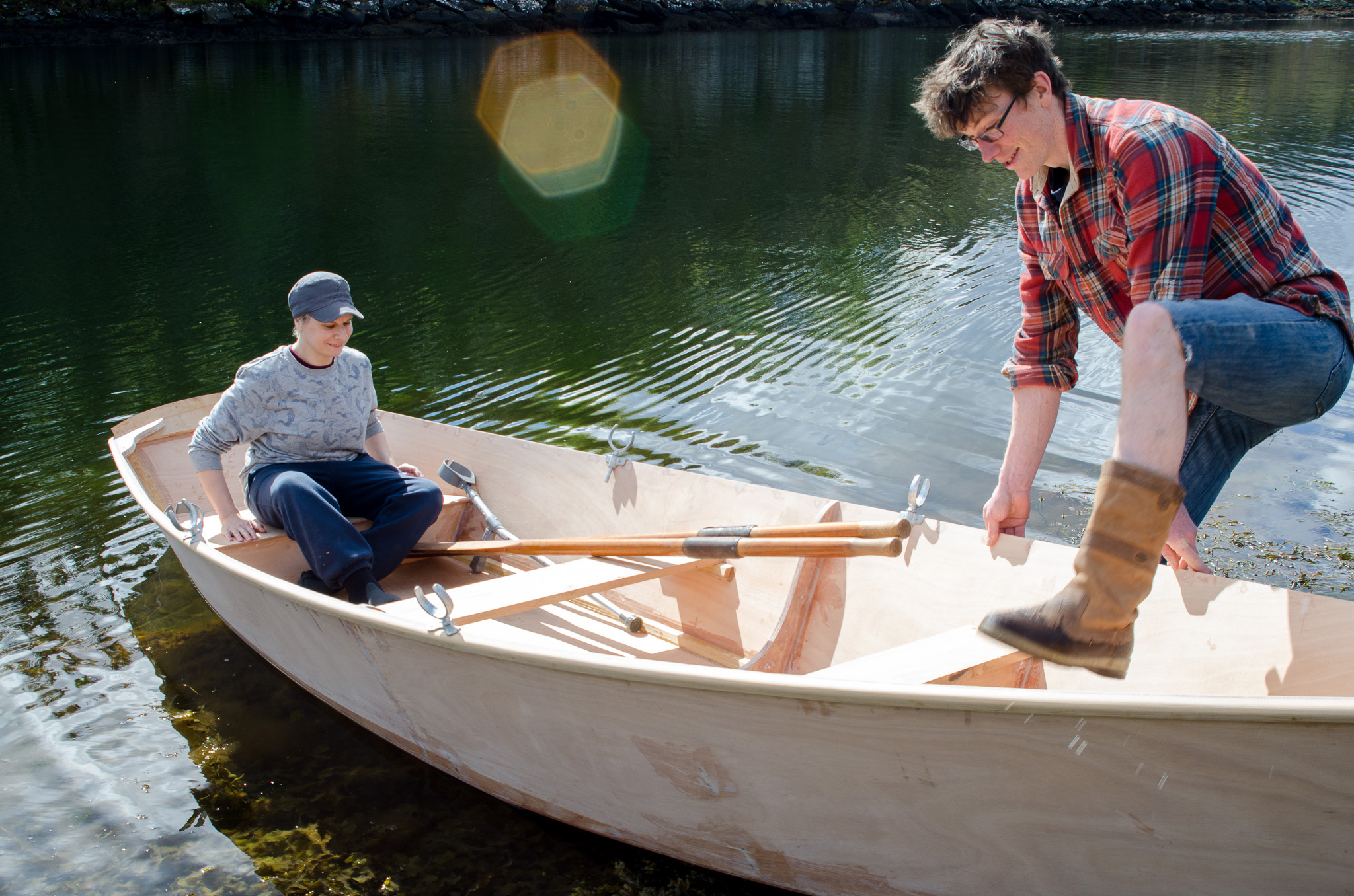
Despite her slightly rough and unpainted appearance, she rowed beautifully and could easily fit two people!

It was a phenomenal feeling launching our own boat, not only because she was both beautiful and useful, but because of our experience in building her. At the end of the process we were able put our fingers on what we thought a Folk School should be about: working together in a convivial way; sharing stories and skills; a sense of achievement and flow throughout process… It’s still quite hard to write down, I guess you’ll have to come and build one with us to really understand!
